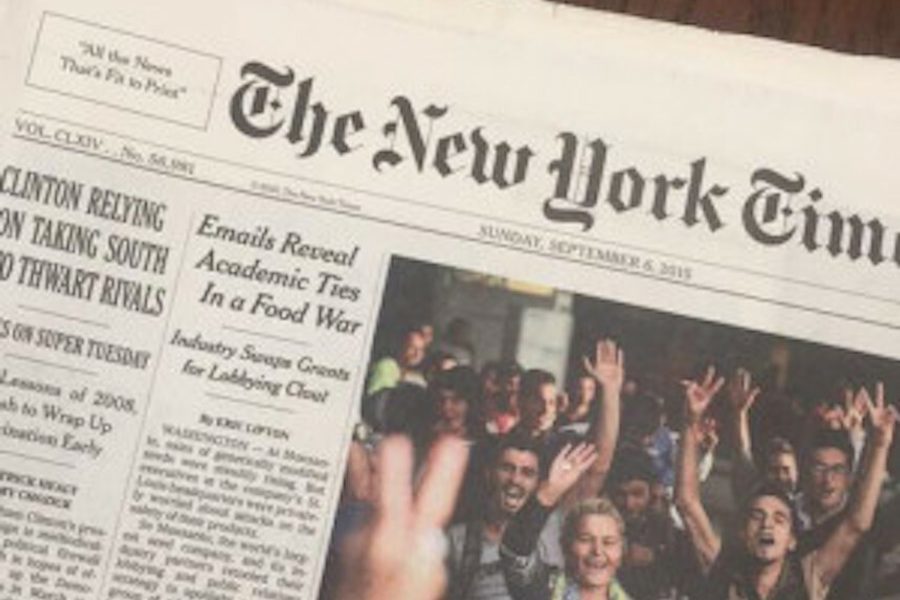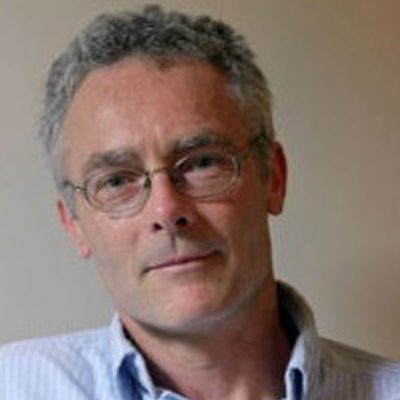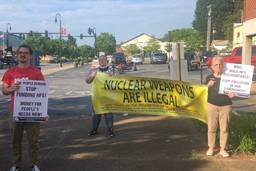The Puppetmasters of Academia: What the New York Times Left Out of Its GMO Exposé
Jonathan R. Latham

“Reading the emails make[s] me want to throw up,” tweeted the Food Babe after reading a lengthy series of them posted online by the New York Times on September 5. The emails in question resulted from a Freedom of Information Act (FOIA) request and were posted on the online side bars of a front-page article, Food Industry Enlisted Academics in G.M.O. Lobbying War, Emails Show, by Times reporter Eric Lipton.
The article is highly disturbing, but, as the Food Babe implied, the Times buried the real story. The actual scoop was not the perfidy and deceit of a handful of individual professors. Buried in the emails is proof positive of active collusion between the agribusiness and chemical industries, numerous and often prominent academics, PR companies and key administrators of land-grant universities for the purpose of promoting GMOs and pesticides. In particular, nowhere does the Times note that one of the chief colluders was none other than Nina Fedoroff, the former president of the American Association for the Advancement of Science (AAAS).
All this is omitted entirely or buried in hard-to-notice sidebars — which were unavailable to print readers. So, here is the article Eric Lipton should have written.
The Lipton Story
The Lipton article seems, at first sight, to be impressive reporting. Lipton describes how Kevin Folta, Chair of the Department of Horticulture at the University of Florida secretly took payment for expenses and $25,000 of unrestricted money from Monsanto to promote GMO crops. On behalf of the biotech industry, or via the PR firm Ketchum Inc., Folta wrote on websites and attended public events, trainings, lobbying efforts and special missions.
Parts of this were already known, but Lipton digs up further damning evidence and quotes from Folta. They include an email to Monsanto that solidly contradicts Folta’s previous denials of a relationship with Monsanto and the biotech industry: “I am grateful for this opportunity and promise a solid return on the investment,” Folta wrote after receiving the $25,000 check, thereby showing both a clear understanding of his role and the purpose of the money. The article goes on to similarly expose Bruce Chassy (Professor Emeritus, University of Illinois) and David Shaw (Mississippi State University). It also discusses, presumably for “balance,” agronomist and GMO critic Charles Benbrook, then at Washington State University, who unlike the others openly acknowledged the source of his funding.
What Lipton Missed
But readers of the emails can find facts that are much more damaging to perceptions of academic independence than that contained in the main article. For one thing, the money Folta received is insignificant next to the tens of millions his university was taking from Syngenta (>$10million), Monsanto (>$1million), Pioneer (>$10million) and BASF (>$1million). Money that it’s hard to believe did not have a role in protecting Folta as he roamed zealously (and often offensively) over the internet, via his twitter account, blog, podcast and OpEds, squelching dissent and ridiculing GMO critics wherever he went.
Also missing from the printed version of the Times article is a sense of the extensive and intricate networking of a small army of academics furthering the interests of Monsanto and other parts of the chemical, agribusiness and biotech industries. Folta rarely acted alone. His networks are filled with economists, molecular biologists, plant pathologists, development specialists and agronomists, many of them more celebrated than Folta, but all of them in a knowing loop with industry and the PR firms. Their job was acknowledged openly in emails. (Cami Ryan, a University of Saskatchewan researcher, wrote to Folta others pro-GMO scientistists, “We are all bad-ass shills for the truth. It’s a pleasure shilling with you,” Or, as Folta himself put it: “I’m glad to sign on to whatever you like, or write whatever you like.”) More generally, the group’s role was to initiate academic publications and other articles and to firefight legislative, media and scientific threats to the GMO and pesticide industries, all the while keeping their industry links hidden.
The academics identified by these emails as cooperating with industry and PR firms include:
Bruce Chassy (University of Illinois) and Alan McHughen (University of California, Riverside) who worked together to destroy the credibility of Russian scientist and GMO critic Irina Ermakova. They persuaded the journal Nature Biotechnology to interview Ermakova about her research and describe it. This interview was followed by a detailed critique of her research (about which none of the authors were expert). Ermakova was neither told of the critique nor given a chance to answer it. This whole elaborate subterfuge required her to be sent a dummy proof of the article she thought she was publishing in the journal.
Calestuous Juma (Harvard University), a longtime advocate of GMOs for Africa.
Wayne Parrott (University of Georgia), a serial intervener in academic GMO debates.
Roger Beachy (Daniel Danforth Plant Science Center, formerly USAID). Beachy is the principal living exponent of a classic biotech strategy: to respond rapidly to a report or publication critical of some aspect of the technology with a multi-author “rebuttal.” [Disclaimer: the inaugural report of the Bioscience Resource Project (on the genome damage caused by genetic engineering) was met, even before formal publication, with both barrels from 23 professors, including Roger Beachy (Altpeter et al 2005)].(2)]
Ron Herring (Cornell) who has helped to promote GMOs in India and fought to defuse the farmer suicide debate in India.
CS Prakash (Tuskegee University) is the convener of the influential listserv AgBioWorld. AgBioWorld was the all-important conduit for a petition signed by three thousand scientists calling for the retraction of a 2001 scientific paper showing GMO contamination of Mexican corn (Quist and Chapela 2001). As detailed in the article “The Fake Persuaders,” the scientists who initiated the petition, and made inaccurate and inflammatory statements about the authors, were not real people. However, their emails could be traced back to servers belonging to Monsanto or Bivings, a PR company that was working with Monsanto at the time.
Nina Fedoroff (Penn State) is the most prominent of all of the scientists looped into all of the Times emails. Nina Fedoroff was the 2011-2012 President of the American Association for the Advancement of Science (AAAS). The AAAS is the foremost scientific body in the United States. During her Presidency, Fedoroff, who is also a contributor to the New York Times, used her position to coordinate and sign a letter on behalf of 60 prominent scientists. This letter was sent to EPA as part of an effort to defeat a pesticide regulatory effort. The real coordinator was Monsanto but Fedoroff participated in phone conferences and email exchanges with them (including with the prominent lobbyist Stanley Abramson) and gets credit in the emails for “moving the ball far down the field”. Yet Fedoroff is not once named in the main Times article and nowhere at all is her position noted.
So the story that academia’s most vocal GMO defenders, and some of its most prominent scientists, are copied into these emails is missing. The focus on individuals like Folta occludes a demonstration, for the first time ever, of long-suspected and intricate coordination and cooperation among them.
Also looped into various of the emails are supposedly independent individuals and organizations who speak in favor of biotechnology, self-reportedly out of personal passion. These include Steve Savage, Karl Haro von Mogel of Biofortified, Mischa Popoff (of the Heartland Institute) and Jon Entine (then affiliated with George Mason University and now head of the Genetic Literacy Project and a Forbes Magazine columnist). All are revealed, by the emails but not in the article, as biotech insiders.
Cooperation among academics is not a crime. But these emails show, as in the example of the EPA letter, that a company (usually Monsanto, but also Dow and Syngenta and a PR firm, often several of them, plus sometimes the biotech lobbyists BIO or CropLife America) were invariably looped in to these emails, and further, that initiatives usually began with one of these non-academic entities, and were shepherded by them. Only rarely is there even a suggestion from the emails that the various academics were out in front, though that was always the intended impression of the result.
But perhaps the biggest of all revelations within these emails is the connivance of senior university administrators, especially at Cornell University. The New York Times article focuses on the misdeeds of Mississippi State University Vice President David Shaw. But, looped into one email string, along with the PR firm Ketchum and science journalist Jon Entine, are various Cornell email addresses and names. These are ignored by Lipton, but the email addresses belong to very senior members of the Cornell administration. They include Ronnie Coffman (Director of Cornell’s College of Agriculture and Life Science) and Sarah Evanega Davidson (now director of the Gates-funded Cornell Alliance for Science).
The Alliance for Science is a PR project and international training center for academics and others who want to work with the biotech industry to promote GMOs. It is funded (to the tune of $5.6 million) by the Gates Foundation. Its program of speakers at Cornell for September include Tamar Haspel (Washington Post reporter), Amy Harmon (New York Times reporter) and Dan Kahan (Yale Law School). These speakers are the exact ones mentioned in a proposal worked out between Folta and Monsanto in a series of email exchanges intended to enhance biotech outreach. These email exchanges also propose setting up “Ask Me Anything” events to be held at universities around the country with Folta as of the panelists.
On September 10, the Cornell Alliance for Science hosted an event in downtown Ithaca, N.Y. (home town of Cornell). It was called “Ask Me Anything About GMOs” and Kevin Folta was a panelist. Somehow or other Davidson’s Cornell Alliance for Science reads Monsanto’s lips, perfectly.
Your right to know
Let me speculate at what is really going on behind the scenes of Lipton’s article.
Earlier this year, a newly-formed U.S. group called US Right to Know (USRTK) set in motion Freedom of Information Act (FOIA) requests directed at 14 (now 43) prominent public university scientists it suspected of working with (and being paid by) the biotech industry and/or its PR intermediaries. Now, if these 43 academics had nothing to hide, this request would not have attracted much attention and hardly any emails would have been forthcoming. However, the USRTK FOIA requests triggered a huge outcry in various quarters about the “harassment” of public scientists. The outcry has led to OpEds in the LA Times and the controversial removal of scientific blog posts defending USRTK, and much else besides, as reputedly tens of thousands of emails (from these FOIA requests) have landed on the desks of USRTK.
What would a good PR company recommend to its clients in such a situation? In order to preempt the likely upcoming firestorm, it might recommend that various media outlets run ahead of USRTK to publish a version of events in which academic small-fry like Kevin Folta, Bruce Chassy and David Shaw (of Mississippi State) are the villains. Making them the fall guys lets others off the hook: high-profile scientists like Nina Fedoroff and Roger Beachy; the pro-biotech academic community in general; and prestigious Ivy League institutions like Cornell University.
These much bigger fish are who the New York Times should have harpooned. Since they did not, or perhaps would not, let us hope that USRTK will make better use of those emails, ideally by posting all of them online.
(A version of this article appeared on independentsciencenews.org.)








